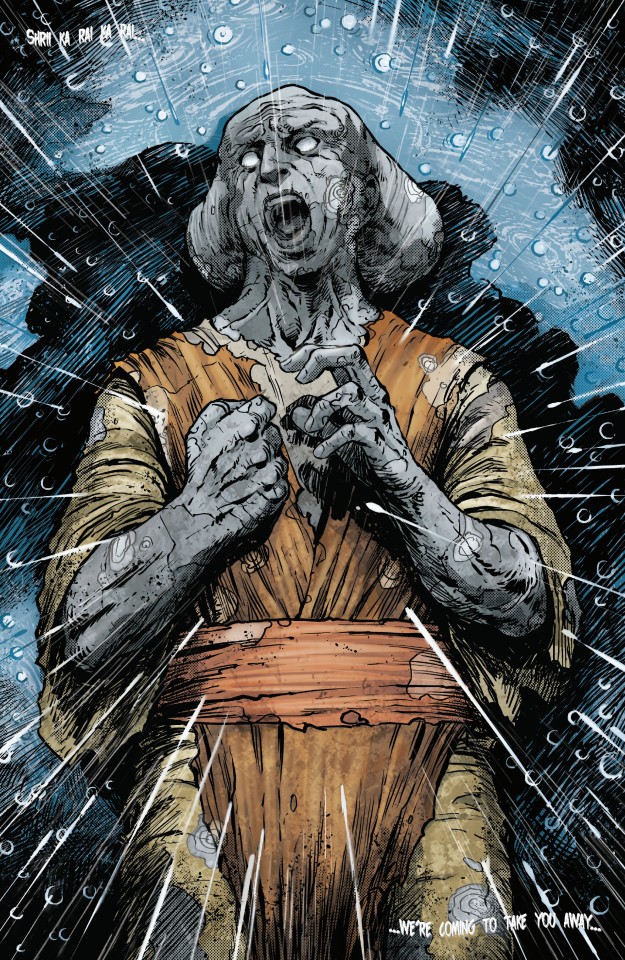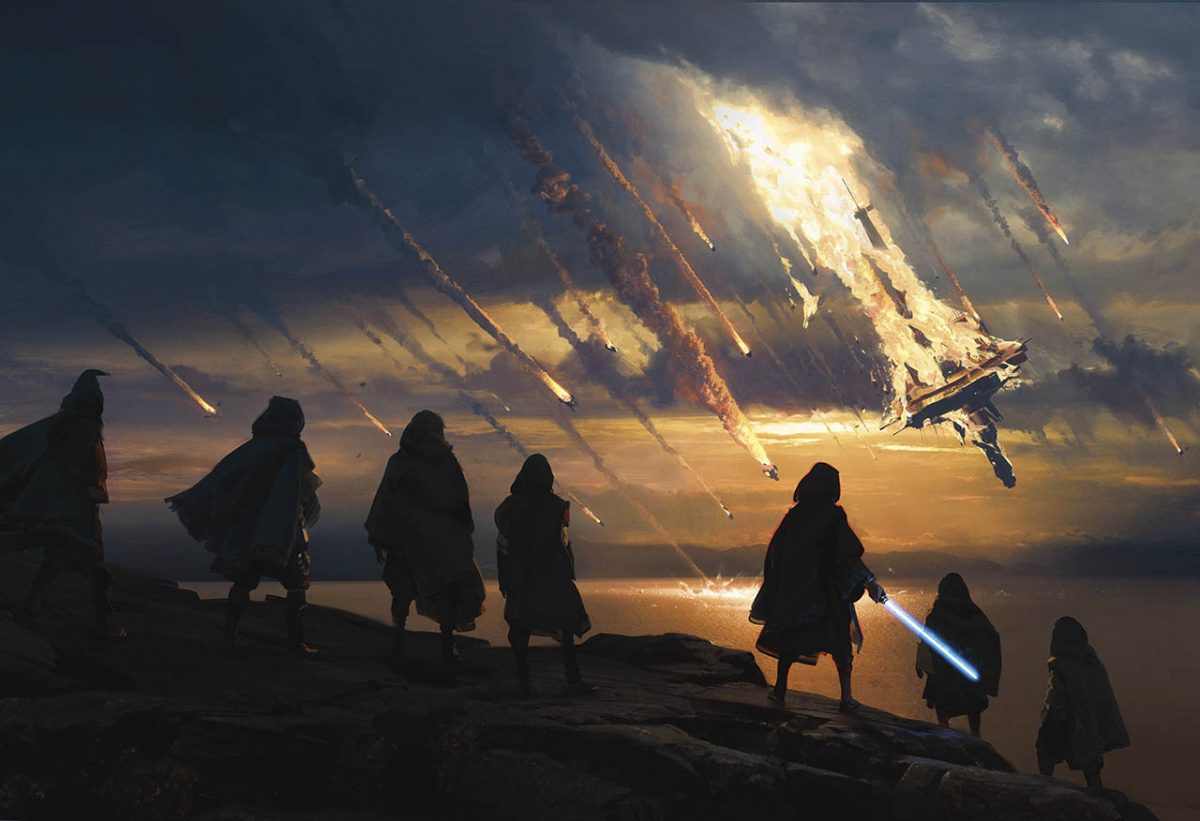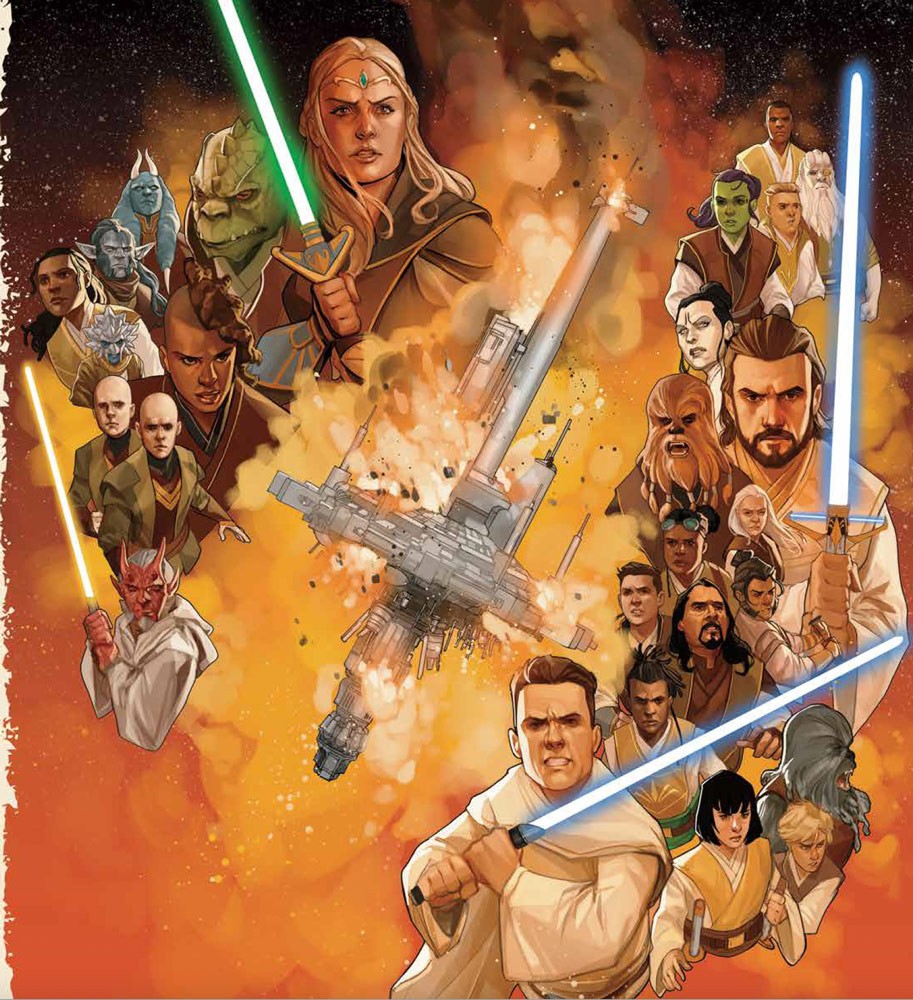The Fallen Star marks the endpoint for the first Phase of The High Republic story initiative. While it’s enjoyable enough, it can’t quite reach the same highs as the other novels.
The New Year is kicking off with the latest Star Wars story, thanks to Claudia Gray’s The Fallen Star. It picks up on the story following the events of the preview ‘wave’ and is set to bring this current phase to a close.
Star Wars: The High Republic – The Fallen Star
Written By: Claudia Gray
Release Date: January 4, 2022
Purchase [Affiliate Link]: https://amzn.to/3EVVNox
As I’ve done with my reviews of the other “adult” novels in this publishing initiative, I’m going to largely keep away from spoilers. I will be talking about two things (don’t worry, I’m not getting specific with those either), so if you want to pick this up 100% blindly, maybe wait to come back after you’ve read it…
Space Titanic
Okay, still here? These are the two things I’ll broadly mention throughout my review:
1. Lots of people die. No, I won’t tell you who.
2. Starlight Beacon goes down.
I don’t necessarily feel like that second point is a spoiler; it’s been featured in images for the marketing and such. Even so, if you didn’t know that, well…that’s pretty much the entire point of the book.
As I mentioned, the story picks up a few months after the attack on the Republic Fair on Valo (portrayed in The rising Storm). Starlight Beacon, the symbol of the Republic’s might and Jedi’s strength, has been dispatched to an Outer Rim world for disaster relief efforts. Stellan Gios, Jedi Council poster-boy has taken over the station, as Avar Kriss is out and about tracking down Tempest Lourna Dee, while the rest of the Jedi seem to finally have the Nihil on the ropes.
Unfortunately, this is exactly where Marchion Ro, Eye of the Nihil, wants them. While the Jedi are distracted with relief efforts and handling minor skirmishes against his forces, Ro manages to sneak a small team aboard Starlight station. Their sole goal is to attack all of the station’s critical systems and bring it crashing down.

The Jedi find themselves facing the dire threat of unknown creatures (who turned Loden Greatstorm to dust in the last novel) who seemingly attack the Force itself, leaving them blind to the problems going on with Starlight. Soon, the Nihil’s plan is set in motion and unable to be stopped. All the Jedi can do is try to save as many people as possible while the station, quite literally, falls apart around them.
Much of these plot points are established pretty early on, so the bulk of the story being told is seeing how the Jedi (Stellan, Bell, Elzar, Burryaga) deal with the destruction and saving people. It’s pretty much the Titanic in space. You know the “ship” is sinking and there’s no way to actually save it. The only thing characters can do, is try to save as many people as possible.

Not So Titanic Scale
In many ways, this story setup makes The Fallen Star one of the smaller tales we’ve gotten in The High Republic so far. Except for a couple asides showing Marchion Ro react to certain things, the entirety of the novel takes place aboard Starlight station itself. This is a marked changed from the galaxy spanning/planet-hopping stories from Light of the Jedi and The Rising Storm.
The change isn’t necessarily a bad thing, however. I enjoyed the story having a tighter narrative focus overall that kept things centered on clear end-goals and conflicts. The issue, though, is it almost felt smaller than it actually should have been.
Starlight Beacon, while being a centerpiece in Light of the Jedi, has largely been explored via the comics and ancillary material. Even so, there’s always been the sense of it being a massive station. It’s one of the Republic’s greatest achievements in technology and able to work as a HUB for all things medical, mechanical, and spiritual in the more far-flung reaches of the galaxy. It’s supposed to be huge.
Yet Fallen Star pretty much keeps the story all within a hangar bay, an office, and a couple hallways. There are some story reasons why large sections of the station are inaccessible, but ultimately it feels like everything takes place on a much smaller ship, rather than a bustling station.
It’s oddly claustrophobic and the result are characters (and story) that feel confined. Because of those confines, some of the characters make some questionable decisions I wouldn’t imagine them making otherwise. Moreso, the limited setting also impacted what should have been more emotional moments in the book.
Because the sense of scale was almost completely taken away, when major things happened on other parts of the station…I struggled to care. We saw the characters react to the destruction, but never managed to feel any of it ourselves.
Light of the Jedi handled this wonderfully when it came to the “Great Disaster,” and making the size of the devastation feel daunting. We got quick glimpses of people spread across the planet (and space) having to come to terms with the disaster heading their way, before being wiped out. There was a connection there to the individuals caught up in the events, which hammed home the gravity of the situation.
Fallen Star, however, keeps the setting and focus so narrow that we’re merely told about the bad things going on elsewhere. There’s no emotional attachment to those moments, even though a couple include some major characters fans have come to love.

Getting Caught Up
Another big reason there seems to be such a disconnect between the events of the story and the emotional element, is in how the book treats certain things. Namely, this is the first time I’ve really felt that other High Republic material was “required reading.” For the most part, the previous novels were able to tell their own engaging story with different characters. While there are specific events that provide a connecting thread, they could still work their own magic.
In this way, Fallen Star feels like a bit of a step backward. While I love seeing certain characters interact with one another (Stellan and Elzar are always great to see), if you don’t come into the book with any sort of attachment to them, you’re not going to find anything in here to change that. They’re largely the same characters from previous works, and considering some have only shown up in younger books/comics, it’s very possible for other readers to come into this book knowing nothing about them.
As for me, about 15 pages in, I found myself running to the comic book store and picking up over $50 worth of High Republic comics (I fell behind, my bad). There were clearly events referenced in those that I had completely missed out on and felt lost when they were brought up in the novel.

I get it, the major point of The High Republic initiative is to tell this massive story about this point in time via a multitude of mediums. That said, the other novels were structured in a way that I didn’t feel like I was out of the loop (aside from events in the previous novels).
I LOVE The High Republic and I’m more than happy to pick up any and all stories related to this era (I was going to catch up on those comics anyway). It seems like it would be a bit frustrating, however, for more casual readers to come into this novel feeling like they’re missing out on some required reading just to feel better connection to these events/characters.
It’s even more frustrating knowing that Claudia Gray has been one of my favorite authors to tackle Star Wars, specifically for how she handles characters. Don’t get me wrong, what we see play out between everyone is excellent (Leox and Affie remain amazing). Those interactions just don’t add anything new to what we already know about these people from previous stories. The new characters we do get (which are few) are barely explored and feel like little more than extras.
For the most part, I’ve loved the collaborative approach to The High Republic books, and you can feel the strength of the various authors pulling their ideas together. Here, however, it feels like Gray was given a series of plot points that had to be hit, including deaths, and a rough amount of time to do it in.

With a Bang?
I know it seems like I’m coming down hard on this book, and I think I should clarify that I still had a bunch of fun while reading it. The pace set, due to the fact that it’s essentially one big disaster story, is blistering. I managed to breeze through it in just a couple days. I enjoyed the action pieces and eager to see what’s next, but this was certainly a more “by the numbers” story than anything High Republic has done so far.
All that said, I think my biggest issue with Fallen Star is more that it never felt like the “end.” Yes, I know, there are still Midnight Horizon (Young Adult) and Mission to Disaster (Middle-Grade) coming in this wave, but the adult books have always served as the primary lynchpin for each wave. As such, being the end of the entire Phase 1, I was expecting certain things to end a bit more definitively.
At the very least, I was hoping for some more clarification/answers. We still don’t know what exactly Marchion Ro’s further plans are, nor any closer to understanding the “Leveler” creature he’s unleashed against the Jedi. Hell, we don’t even have time to really explore the fallout from this latest event/disaster, so the state of the galaxy at the end of Phase 1 is nebulous.
So rather than feeling like an endpoint, where the next Phase could jump off into new adventures/stories, Fallen Star feels like just another story in a wave…One that doesn’t necessarily feel complete on its own. Perhaps the onus is on my here and having to deal with the expectations I went into the story with. Regardless, for something that marks a major milestone for the whole initiative, I was surprised to see it end without any sort of real resolution/revelations.
Ultimately…you should definitely still give it a read. It is still a LOT of fun and I love these characters enough from previous stories that I don’t mind their more straightforward nature here. I think fans who’ve been keeping up with High Republic so far will still get a kick out of this one, and an emotional gut punch, though it’s not nearly as accessible for casual readers.
Considering how amazing The High Republic has been so far, it’s a bit of a bummer to see this final wave book be among the weakest. But even the weakest of these books are still a blast and leave me eager to learn what comes next.


